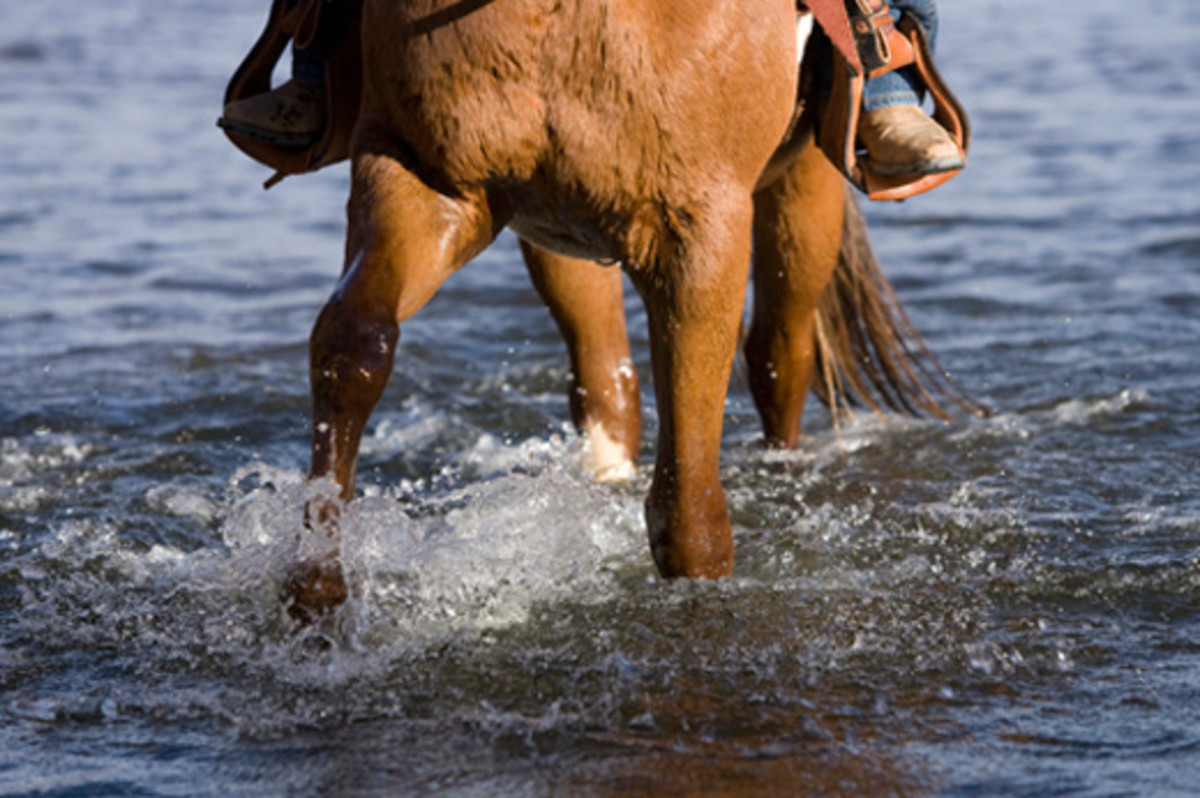
When you introduce your horse to water and safe-crossing practices (see “Crossing Water,” Horsemanship & Maneuvers, The Trail Rider, March ’10), stay in control. Don’t allow him to play in the refreshing streams you find along the trail. Here are two behaviors to watch out for when you step into water with your horse, and what to do when you encounter each one.
Drinking-to-Play Behavior
Although it’s fine to allow your horse to take a drink, take corrective action if he starts to bob his head in the water between sips. Ask him to pick up his head by pulling up on the reins, then redirect his attention onto you. Ask him to step forward or turn to make sure he’s following your cues.
If your horse pulls his head down to drink again, allow him to gulp as long as he’s taking in water and not playing. Stop any head-bobbing play as soon as it starts.
Pawing in Water
When your horse paws water, it might look like he’s simply enjoying himself. However, horses commonly paw before they roll, as you’ve observed. In natural waterways, horses paw to test the water’s depth and riverbed bottom for any hazards before they drop and roll.
In the wild, rolling in water is a natural self-grooming and -cooling behavior. However, under saddle, the practice is dangerous. At the very least, your horse will roll onto the saddle, which can harm his back, and roll you into the water. And, unless you take evasive action, he can even crush you under his weight.
When you’re cooling off and relaxing at a calm water crossing, keep in mind that the longer you loiter, the more likely your horse will become bored and consider rolling.
Learn to tell the difference between your horse’s high steps through the water and a pawing motion. If you’re standing still when your horse reaches up with a front leg and slaps the water, he’s pawing – and may be preparing to roll.
Stop the behavior as soon as it starts. If you allow the behavior to go by without consequence just one time, your horse will think the behavior is acceptable and allowed.
If your horse paws, immediately pull up on the reins, and direct him to move forward, back, or on a circle. While being careful and putting safety first, let him know that you’re in charge as you ride through water.
Use each water crossing as a time to teach your horse that you’re the captain of the ride and that you dictate his every step.

Julie Goodnight (www.juliegoodnight.com) lives in central Colorado, home to miles of scenic trails. She trains horses and coaches horse owners to be ready for any event, on the trail or in the performance arena. She shares her easy-to-understand lessons on her weekly RFD-TV show, Horse Master, and through appearances at clinics and horse expos held throughout the United States. She’s also the international spokesperson for the Certified Horsemanship Association (www.cha-ahse.org).
Heidi Nyland (www.wholepicture.org) is a lifelong horsewoman, equine journalist, and photographer based in Longmont, Colorado.






